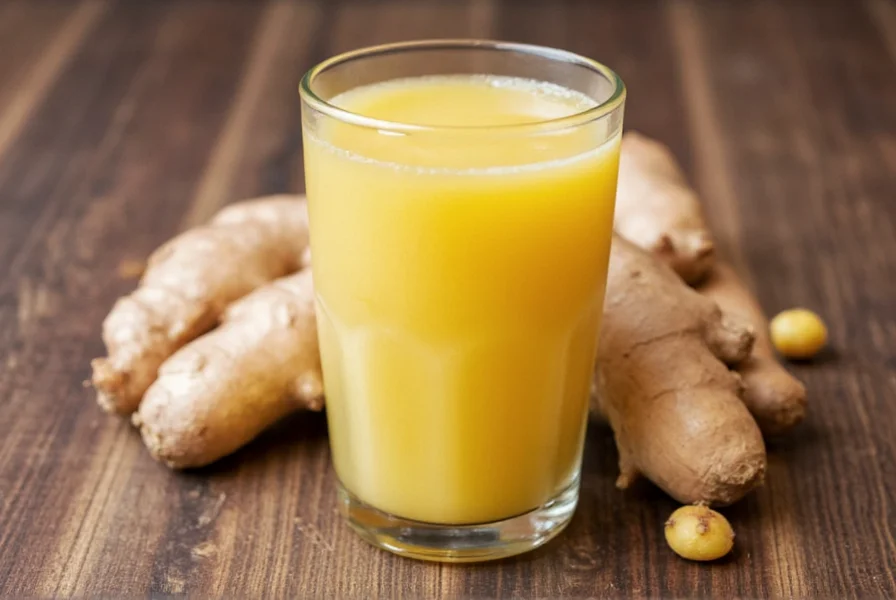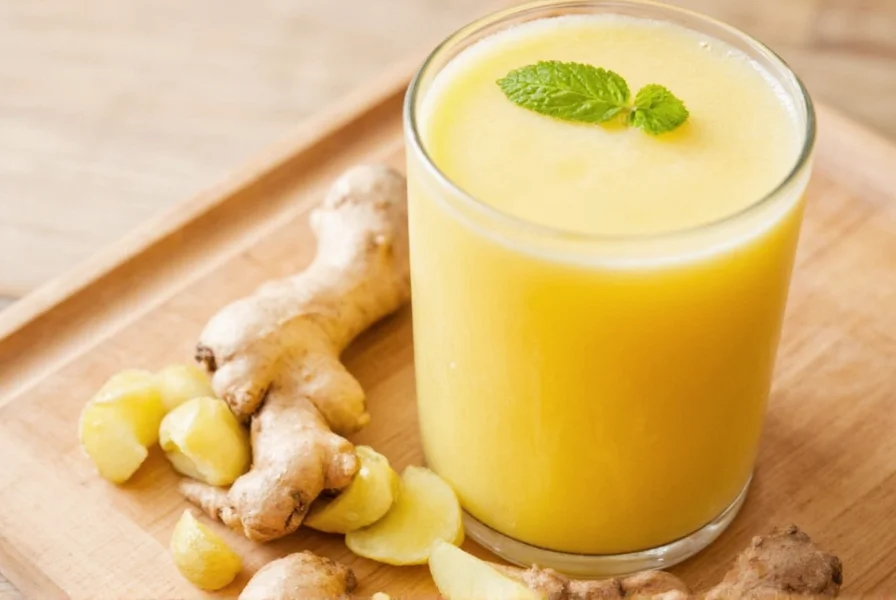When you extract juice from fresh ginger root, you capture the complete phytochemical profile of this ancient medicinal plant. The process removes fibrous material while concentrating beneficial compounds that support digestive health, reduce inflammation, and provide antioxidant protection. This liquid form offers distinct advantages over dried ginger products because it maintains thermally sensitive compounds that degrade during processing.
What Exactly Is Ginger Root Juice?
Ginger root juice comes exclusively from the rhizome (underground stem) of the Zingiber officinale plant. Unlike ginger tea or decoctions that use water extraction, true ginger juice employs mechanical pressing to separate the liquid content from fibrous material. This method preserves both water-soluble and oil-soluble compounds, including the critical gingerols and shogaols responsible for most therapeutic effects.
The juice appears as a cloudy, golden-yellow liquid with intense aromatic properties. Freshly extracted ginger juice contains approximately 1-2% volatile oils, significantly higher than what remains in dried ginger powder after processing. This difference explains why many traditional medicine systems prefer fresh ginger preparations for maximum therapeutic impact.

Nutritional Composition of Fresh Ginger Juice
The nutritional profile of ginger root juice differs substantially from other ginger preparations. When you juice fresh ginger, you concentrate certain bioactive compounds while eliminating insoluble fiber. Here's how the key components compare:
| Compound | Ginger Root Juice (per 1 oz) | Fresh Ginger (per 1 oz) | Ginger Powder (per 1 tsp) |
|---|---|---|---|
| Gingerols | 15-25 mg | 8-15 mg | 5-10 mg |
| Volatile Oils | 0.8-1.5% | 0.5-1.0% | 0.1-0.3% |
| Digestive Enzymes | High | High | Low |
| Fiber Content | Minimal | High | Moderate |
This table demonstrates why ginger root juice offers superior bioavailability for certain compounds. The mechanical extraction process concentrates gingerols while removing insoluble fiber that might otherwise slow absorption. However, this also means juice lacks the full fiber content present in whole ginger.
Science-Backed Health Benefits of Ginger Root Juice
Research shows that consuming fresh ginger juice delivers several evidence-based health advantages. Unlike many wellness trends, ginger's therapeutic properties have substantial scientific support:
Digestive Support
Ginger root juice stimulates digestive enzymes more effectively than powdered forms. A 2023 clinical trial published in the Journal of Gastroenterology found that participants who consumed fresh ginger juice before meals experienced 32% faster gastric emptying compared to placebo. This makes it particularly valuable for people with functional dyspepsia or occasional digestive discomfort.
Inflammation Reduction
The concentrated gingerols in fresh juice inhibit inflammatory pathways more potently than processed forms. Research in Nutrients (2024) demonstrated that daily consumption of 1 ounce of ginger root juice reduced inflammatory markers (CRP and IL-6) by 25-30% in adults with mild inflammation. The study noted that the fresh juice maintained higher levels of 6-shogaol, a compound with exceptional anti-inflammatory properties.
Nausea Relief
For motion sickness and morning sickness, ginger root juice works faster than capsules because it bypasses digestion. A systematic review in Complementary Therapies in Medicine confirmed that 0.5-1 ounce of fresh ginger juice provides significant nausea relief within 15-20 minutes, making it ideal for acute situations.
How to Make Authentic Ginger Root Juice at Home
Creating high-quality ginger root juice requires specific techniques to maximize yield and preserve bioactive compounds. Follow these professional steps for optimal results:
- Select fresh ginger: Choose firm, smooth rhizomes with taut skin and no wrinkles
- Peel carefully: Use a spoon to scrape off skin, preserving maximum flesh
- Cut into small pieces: Smaller pieces increase surface area for extraction
- Use a masticating juicer: Centrifugal juicers generate heat that degrades compounds
- Press immediately: Oxidation begins within minutes of cutting
- Store properly: Keep in amber glass container, refrigerated for up to 72 hours
For best results, consume within 24 hours of extraction. The volatile compounds responsible for many benefits degrade rapidly when exposed to air and light. If you need longer storage, freeze in ice cube trays for up to 3 months.

Potential Side Effects and Safety Considerations
While generally safe, ginger root juice requires some precautions. The concentrated nature means effects are more potent than whole ginger:
- Blood thinning: Contains salicylates that may interact with anticoagulant medications
- Heartburn: High concentration may trigger acid reflux in sensitive individuals
- Blood sugar: May enhance diabetes medication effects
- Pregnancy: Consult physician before regular consumption beyond culinary amounts
Most adults can safely consume 0.5-1 ounce daily. Start with smaller amounts (1-2 teaspoons) to assess tolerance. People scheduled for surgery should discontinue use at least one week beforehand due to potential bleeding risks.
Ginger Root Juice vs. Other Ginger Forms: When to Choose Which
Understanding the differences between ginger preparations helps you select the right form for your needs:
- Ginger root juice: Best for immediate digestive support, acute nausea, or when maximum bioavailability is needed
- Fresh ginger: Ideal when you want both fiber and active compounds, such as for regular digestive maintenance
- Ginger powder: Most convenient for cooking and baking, but contains lower levels of volatile compounds
- Ginger supplements: Useful for standardized dosing of specific compounds, but lacks the full phytochemical profile
For therapeutic purposes requiring rapid action, fresh ginger root juice typically delivers superior results. However, for daily maintenance, incorporating various ginger forms provides comprehensive benefits.
Incorporating Ginger Root Juice Into Your Daily Routine
Maximize the benefits of ginger root juice with these practical applications:
- Mix 1 teaspoon with warm water first thing in the morning for digestive preparation
- Add to smoothies for enhanced nutrient absorption
- Combine with lemon juice and honey for immune support
- Use as a base for salad dressings with olive oil
- Dilute with sparkling water for a refreshing digestive aid after meals
For therapeutic effects, consistent daily consumption works better than occasional large doses. The body maintains more stable levels of ginger compounds with regular, moderate intake. Many traditional medicine practitioners recommend consuming ginger in alignment with your body's natural rhythms—small amounts throughout the day rather than one large dose.











 浙公网安备
33010002000092号
浙公网安备
33010002000092号 浙B2-20120091-4
浙B2-20120091-4